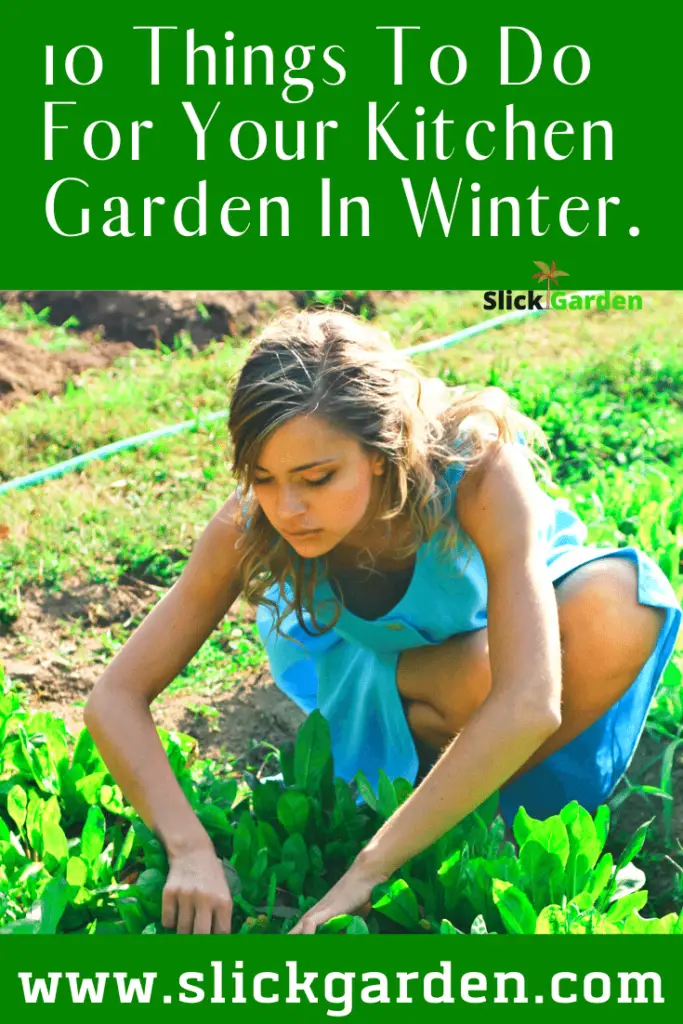Winter is here.
After heavy summer activities and crops, this is the time to shut your garden for good until next spring. If you wanted to save time and energy for next spring. Then you need to work now on a few things.
In this article, I will share with you 10 tips to prepare your kitchen garden for the winter season.
Number one: Clean Up Your Garden From Dead.

Dead and rotting plants of summer look so unclean, untidy. They have fungus, diseases and pests in them. They may have eggs of pests in them. Which can be a nightmare for you in next spring. Remove them, buried them or do whatever the hell you wanted to do with them to save your precious little garden. If you buried them, that will good for you. Because these dead leaves and plants can be good organic manure and will improve the health of your garden’s soil.
Number Two: Clean Up Weeds From Your Kitchen Garden.

Field bindweed, Pigweed or Finger grass. No matter how fancy there names are. You can dig them in a big hole of your garden. You can burn them or throw them far far away from your beautiful kitchen garden. If you don’t do that, they will come back and they will a painful headache in spring. It is best for you to burn them.
Number Three: Test Your Soil.

Now that, winter is here. We all have so much free time. And it is a good time to adjust the pH of the soil and add some nutrients in our Garden soil. Here are a few tests we should run on the soil. These tests will tell us what to add and when to add in the soil.
- Soil pH test.
- Potassium level test.
- Phosphorus level test.
- Calcium level test.
- Sulphur level test.
- Organic matter level test.
- Lead content test.
Number Four: Plant Garlic Time.

This is the for growing whole year supply of garlic. You can grow store-bought garlic or you can buy any good kind of garlic and grow them. It is so easy to grow garlic in your kitchen garden.
- Pick up a big bulb of garlic and break into cloves.
- Select the bigger clove.
- Plant the clove in a loose soil 2 inches deep and 6 inches apart.
- Water them on a regular basis.
- Use your thumb to check the moisture level.
- If the soil is dry only then water them.
Number Five: Expand Your Kitchen Garden.

Winter is free time. Why don’t we use his time to expand our kitchen garden? Here are a few things you can do to expand to your garden.
- Make some new raised bed garden.
- Buy some new containers and pots.
- You can make your own pots (a great experience).
- Add some fresh soil in your garden.
- Add mulch on the top of the soil to protect it from growing weeds.
- Or you can use dead leaves of fall as mulch.
Number Six: Add Mulch To Your Kitchen Garden.

For the beginners, Mulch is the top layer of soil which you add for multiple purposes.
- Mulch protects the soil from drying.
- It protects the roots of plants from frost.
- It stops the growth of weed.
You can buy some good quality mulch from store OR you can use the leaves of fall, straw, pine needles and grass clipping as mulch.
Number Seven: Don’t Pull the Trigger too Early.

This is very important. Don’t add mulch too early. Wait until cold. If you add mulch too early, this will be a luxury hotel for the mice and a nightmare for you and your plants. That’s way, wait for some cold and then add mulch to the top. So mice find a new house like your garage.
Number Eight: Plant Some Cover Crops.

Cover crops have multiple benefits:
- They don’t die in the winter season.
- They protect the soil from erosion.
- They add organic matter in the soil.
- They keep the precious microbes active throughout the winter season.
- They will be great free compost when die.

Here are a few good cover crops you can grow. Rye – Winter Rye, Cereal Rye.
Number Nine: Polish Your Kitchen Garden Gear.

Winter is a time to relax for you, your soil and your gear. Clean your gear, polish them and put them away in your garage for good. Now it is good to read a new book on gardening and learn some more tips and tricks.
Number Ten: Reflect And Plan.

Now it is good free time to take a mind trip to the past. The best thing you can do is to write a gardening journal. Write about varieties which grow best and which not. Write about what you do wrong this year and don’t want to do next spring. Write about every experiment you wanted to do in your Kitchen Garden next spring.

